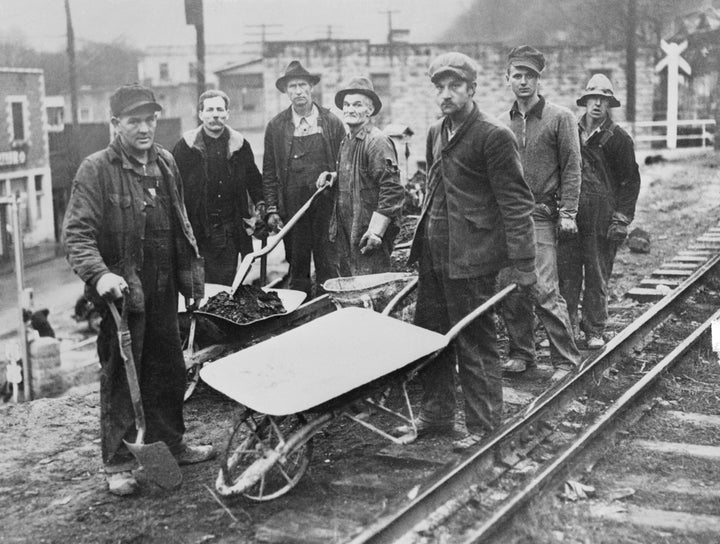
When driving up Route 60 along the Kanawha River to our family reunions, the Hawks Nest State Park overlook offered my family a picturesque setting to take a breath, admire the New River Gorge’s beauty or watch hawks circling below. Curious visitors, like I was growing up, may also notice the plaque marking one of the more chilling episodes in West Virginia’s long history of industrial tragedies: the Hawks Nest Tunnel disaster, in which several hundred workers were exposed to silica dust and died. Due to a confluence of events in Washington, D.C., that story bears retelling today.
In the 1930s, deep under Hawks Nest, thousands of workers dug through silica-laden rock while building a tunnel to divert the New River to generate power for an industrial plant downriver. In the months and years that followed, at least 476 of those men, and likely far more, died due to silicosis, a lung disease caused by inhaling silica dust.
Several factors made the Hawks Nest Tunnel incident a disaster. The tunnel was poorly ventilated; men drilled without using safety equipment such as masks or water to tamp down the dust; and the contractor burned through the labor force, sending many of the workers home―or to their grave―after working less than two months. Many of the workers were African American migrants from the South who were later buried in unmarked graves after dying from the so-called “tunnelitis.”
Beginning in 1931, reports in West Virginia newspapers and action by the state’s congressional delegation brought national attention to the Hawks Nest Tunnel incident and the dangers of silica exposure. Labor Secretary Frances Perkins launched an awareness campaign, and in the decades following, the Occupational Safety and Health Administration, or OSHA, established science-based safeguards.
In effect, the Hawks Nest Tunnel disaster led to commonsense worker protections, and now, nearly 90 years later, its history lives on in a newly updated standard that will save more than 600 workers’ lives and prevent more than 900 cases of silicosis each year.
And here is where the Hawks Nest history meets the present.
In the next few weeks, the U.S. Senate will consider the nomination of Bill Wehrum to lead the U.S. Environmental Protection Agency’s Office of Air and Radiation, the office charged with protecting clean air — one of the most important public health responsibilities in our country. This would seem an unlikely job for a man who just last week argued in court on behalf of industry clients against the updated silica rule. In the courtroom, Mr. Wehrum stated, “people are designed to deal with dust. People are in dusty environments all the time, and it doesn’t kill them.” This disregards the facts and the history that brought about the safeguards in the first place.
Mr. Wehrum’s fight against these safeguards is one more point in his long career of putting industry interests over those of workers or the public. Simply put, his track record inside and outside of government disqualifies him from serving as the nation’s clean air protection officer.
By confirming Mr. Wehrum, the Senate would place him in charge of using the best available science to set strong pollution limits so that our air is safe to breathe. Can you imagine that responsibility going to someone who has doubted the basic facts behind safeguards against silica dust? What if he takes the same approach to smog and soot pollution? To toxins like mercury or arsenic? Workers, parents, people suffering from asthma— all of us would likely disagree.
The same spirit that recognized and addressed the gravity and danger of silicosis in the 1930s lives on in Appalachia. West Virginians have experienced more than our fair share of industrial disasters, including, most notably, a long history of mining accidents. But, as Senator Joe Manchin recently noted in arguing against budget cuts vital to protecting miners, we have also risen to the occasion and called on our representatives to protect our workers and our families.
Now, rather than forget the history of Hawks Nest and its role in setting safeguards for the air workers breathe, senators on the committee of jurisdiction, including West Virginia’s Senator Shelley Moore Capito, should vote against Bill Wehrum, the nominee for Assistant Administrator for the Office of Air and Radiation. We need a champion for the clean air we all breathe, not someone actively fighting against us.